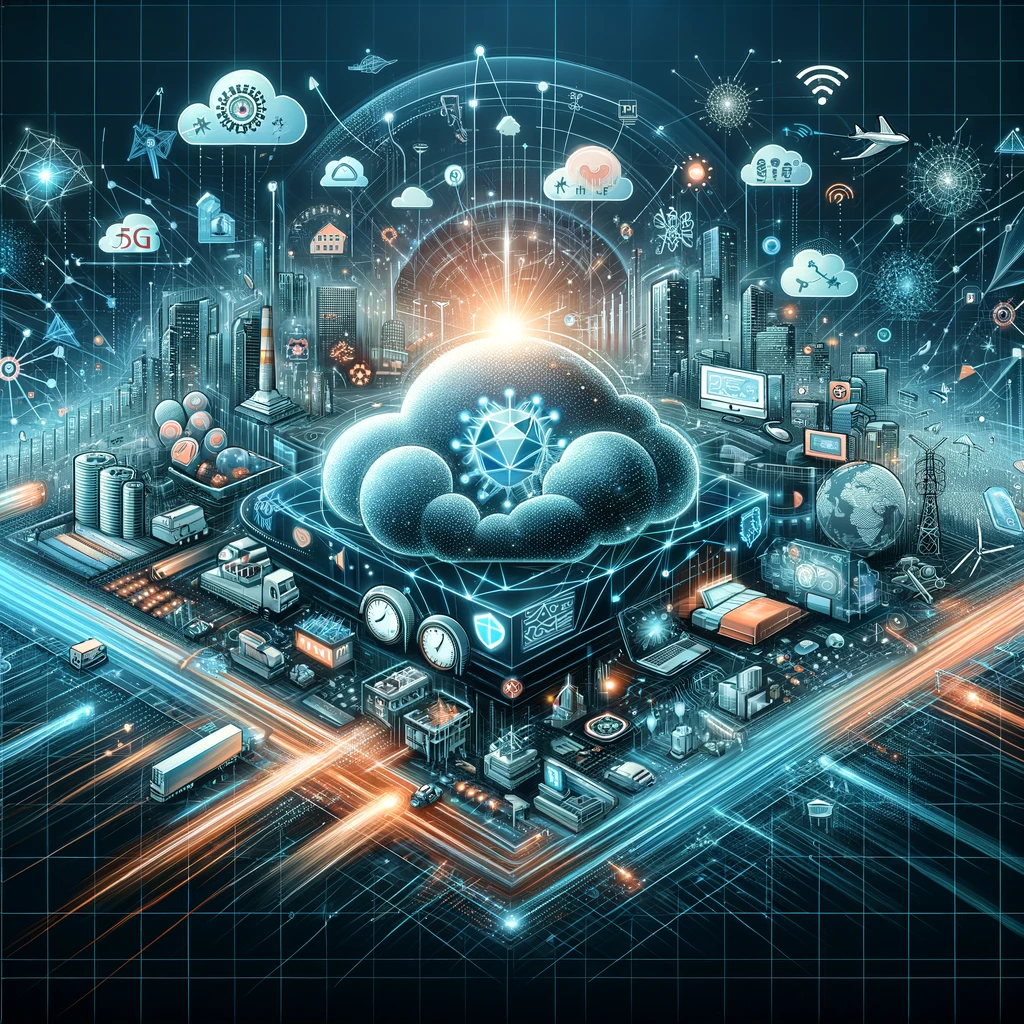Standing at the forefront of technological innovation, edge computing is quickly becoming a cornerstone in the reshaping of data processing and the decentralization of our digital world. This cutting-edge approach, which brings data processing closer to its source, promises to overhaul industries, transform how we interact within society, and revolutionize business approaches. In this discussion, we’ll dive into the heart of edge computing’s current momentum and future outlook, examining its potential to alter the business and social landscape while providing guidance on navigating the upcoming shifts in this field.
Trends and Predictions in Edge Computing
- Widespread Adoption of IoT: The surge of Internet of Things (IoT) devices is propelling the expansion of edge computing, making it a fundamental part of our digital fabric. This integration promises to enhance real-time data analysis and intelligence across various sectors.
- AI and ML Move to the Edge: By bringing Artificial Intelligence (AI) and Machine Learning (ML) closer to the data source, edge computing enables more efficient processing, slashes latency, and boosts privacy by allowing for local data analysis, bypassing the need to send sensitive data to distant servers.
- 5G Fuels Edge Growth: The deployment of 5G networks is set to supercharge edge computing, offering high-speed, low-latency connections that will unlock new possibilities in autonomous vehicles, smart cities, and immersive augmented reality (AR) experiences.
- Focus on Security: As edge computing grows, enhancing security to safeguard against potential threats becomes crucial. Expect to see a shift towards sophisticated encryption and decentralized security models designed to fortify data integrity at the edge.
- Sustainable Practices: With an eye on sustainability, the future of edge computing will likely include the development of energy-efficient technologies and eco-friendly data centers, aiming to minimize the environmental impact of these infrastructures.
The Societal and Business Impact
Industry Transformation: Edge computing is poised to revolutionize various sectors by offering enhanced operational efficiency, personalized customer interactions, and innovative business models, notably impacting manufacturing, healthcare, retail, and logistics.
Social Advancements: Beyond its commercial benefits, edge computing offers potential societal gains, particularly in smart city projects aimed at improving traffic, public safety, and environmental monitoring, thereby enhancing urban life quality.
Closing the Digital Gap: By facilitating local data processing, edge computing presents an opportunity to extend advanced digital services to remote and underserved regions, potentially narrowing the digital divide.
Preparing for the Edge Computing Wave
Invest in Infrastructure: Businesses looking to thrive in the digital age should bolster their edge infrastructure, incorporating edge servers, and ensuring robust connectivity to support edge-based applications.
Cultivate Talent: As the demand for expertise in edge computing, cybersecurity, and data analytics grows, nurturing these skills becomes imperative for organizations aiming to lead in innovation.
Collaboration is Key: Navigating the edge computing landscape will require cross-sector partnerships, uniting industry, academia, and government to share knowledge and resources effectively.
Security and Privacy Priority: In the era of edge computing, prioritizing data security and privacy is essential to protect sensitive information and maintain consumer trust, necessitating stringent security protocols and compliance with data regulations.
Conclusion
The journey into the future of edge computing is filled with both promise and challenges. As this technology continues to unfold, embracing the forthcoming changes, investing in the right infrastructure, and fostering essential skills will be crucial for businesses and society alike. The evolution of edge computing offers a pathway to unprecedented innovation, operational efficiencies, and societal improvements. By adopting a forward-thinking and collaborative approach, we can fully unlock edge computing’s potential and navigate its complexities with confidence, paving the way for a future where technology enriches every aspect of our lives.
This deep dive into the future of edge computing highlights the significant impact and transformative potential of this technology. Keeping abreast of emerging trends, understanding the broader implications, and preparing strategically will position stakeholders to lead in the edge computing revolution, ready to embrace its advantages and shape a tech-driven future.






